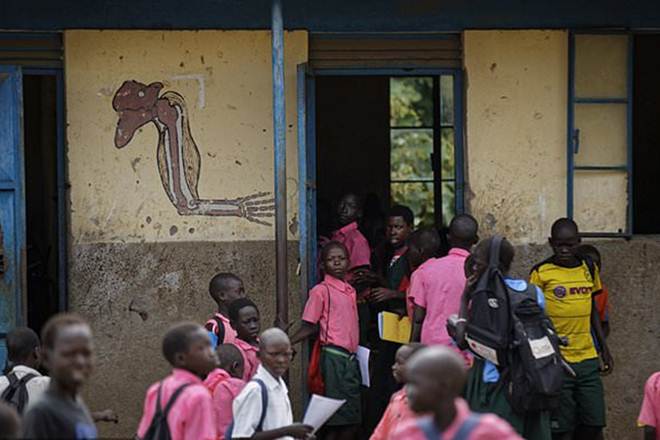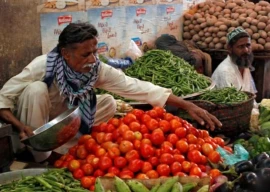
Nine of the top 10 countries where girls fail to get a education are in Africa, while other crisis crippled countries, including Somalia and Syria, failed to make the list due to insufficient data.
The report said that girls are least likely to be in school in South Sudan, with nearly three-quarters of school-age girls out of the classroom, followed by Central African Republic, Niger and Afghanistan, all countries hit by conflict.
Malala, PM Abbasi discuss female education in Pakistan at UN
According to BBC, the top 10 toughest places for girls' education are as follows:
South Sudan: the world's newest country has faced much violence and war, with the destruction of schools and families forced from their homes. Almost three-quarters of girls do not even make it to primary school
Central African Republic: one teacher for every 80 pupils
Niger: only 17 per cent of women between the ages of 15 and 24 are literate
Afghanistan: wide gender gap, with boys more likely to be in school than girls
Chad: many social and economic barriers to girls and women getting education
Mali: only 38 per cent of girls finish primary school
Guinea: the average time in education among women over the age of 25 is less than one year
Burkina Faso: only 1 per cent of girls complete secondary school
Liberia: almost two-thirds of primary-age pupils out of school
Ethiopia: two in five girls are married before the age of 18
“Over 130 million girls are still out of school - that’s over 130 million potential engineers, entrepreneurs, teachers and politicians whose leadership the world is missing out on,” said Gayle Smith, president of the ONE Campaign that published the index ahead of the International Day of the Girl. “It’s a global crisis that perpetuates poverty.”
“This index shines a necessary spotlight on the barriers that girls face to accessing a quality education in Africa,” said Anne-Birgitte Albrectsen, CEO of children’s humanitarian organization, Plan International.
“The quality of a country’s education is linked to the resources governments invest in it,” said Albrectsen, who called for the closing of the education funding gap and addressing the barriers preventing girls from going to school.
Sindh’s crusader for girls' education Dadi Leelan passes away
The report found exceptions, however, such as Burundi, one of the poorest countries in the world, that outperformed 18 wealthier countries when it came to girls’ education.
Thousands of girls are kept from school due to poverty, early marriage, dangers in traveling to class and having too many chores at home, according to the United Nations’ children’s organisation, UNICEF.
In Ethiopia, two in every five girls marry before their eighteenth birthday while just one per cent of girls in Burkina Faso complete secondary school, according to the report.
Attitudes towards education for girls are starting to change across Africa - as more parents see sending their daughters to school not only as a chance to improve their futures, but also to boost the family’s fortunes, experts say.
But generations of women have been left behind, with women accounting for almost two-thirds of the world’s illiterate adults.
“Extreme poverty and gender inequity drive the injustice that not only keeps girls out of school, but forces them into child marriages,” said Fiona Mavhinga, a lawyer and one of the first girls in Zimbabwe supported by international educational charity Camfed to go to university.
Without an education young woman are “locked away from a better future,” she said.
1732503274-0/Untitled-design-(43)1732503274-0-405x300.webp)
1732501636-0/Untitled-design-(42)1732501636-0-165x106.webp)

1732498967-0/Outer-Banks--(1)1732498967-0-165x106.webp)
1732086766-0/BeFunky-collage-(74)1732086766-0-165x106.webp)












COMMENTS
Comments are moderated and generally will be posted if they are on-topic and not abusive.
For more information, please see our Comments FAQ